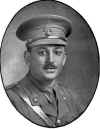The term "Traditional Scouting" has many definitions. In America it generally refers to "old-fashioned" Scouting in some form. For "old-school" Scouting enthusiasts, I offer here the entire contents of Ernest Thompson Seton's American handbook, The Birch Bark Roll, which was the original source of some of the elements in Lord Baden-Powell's Scouting scheme, including what B-P called "Proficiency Badges" ("engraved with the symbol or the deed for which it is given"), Scouting games, Patrol totems and calls, and advancement based on standards rather than competition.
The Inquiry Net is also the home of Daniel Carter Beard's entire pre-Scouting handbook, The Boy Pioneers: Sons of Daniel Boone. This was probably the world's first national youth organization based on completely boy-run local chapters. When Baden-Powell's Scouting program was eventually established in the United States through the significant filters of the YMCA and James West, both Seton and Beard joined the BSA and greatly influenced its subsequent post Baden-Powell development.
In the following handbooks, American "geezers" will recognize the origins of many of the elements of Scouting that were still practiced in their own youth and in that of their fathers.
American Pre-Scouting Handbooks for Boys
Ernest Thompson Seton's The Birch Bark Roll
Daniel Carter Beard's The Boy Pioneers: Sons of Daniel Boone
The term "Traditional Scouting" has a different meaning outside of the United States, where it refers to a "back to basics" movement that rejects the world-wide trend to "modernize" Scouting in order to appeal to imagined wider slices of fleeting popular and commercial youth cultures, and returns Scouting to a scheme intentionally based on Baden-Powell's own model of Scouting.
Traditional Scouting is not historical reenactment, but for the most part an attempt to present Scouting as the game that was played in the 1960s. For all practical purposes in most of the former British Empire (with minor national variations due to climate and the influence of native cultures), this was how it had been played by Scouting's inventor, Lord Baden-Powell , while he was still alive. In Traditional Scouting, the only changes in the program are for reasons of advances in a) health & safety practices, b) environmental concerns, and c) light-weight camping technologies.
The following Traditional Scouting model was developed in 2003 by the North American World Federation of Independent Scouts for use by independent Troops in American, and was eventually adopted by the Baden-Powell Service Organization (bpsa-us).
"Americanized" Traditional Scouting Handbooks
Independent Pathfinders (a generic American adaptation of Baden-Powell's "Traditional" or original Scouting program, which has been adopted by independent Scout Troops, and the Baden-Powell Service Association)
Otters (Traditional Scouting for Ages 5-7)
Timber Wolves (Traditional Scouting for Ages 8-10)
Rovers (Traditional Scouting for Ages 17+) No upper age limit.
Adult Outdoor Training (Traditional Skills Training)
General Information
PO&R (sample "Policy, Organization, & Rules" for how a Traditional Scouting organization is organized)
Traditional Award Badges A source of "generic" advancement badges used by small Traditional Scouting organizations world-wide.
See Also:
Books by Dan Beard:
Outdoor Handy Book
American Boys' Handy Book
Field and Forest Handy Book
The chapter "Scouting" from his autobiography, Hardly a Man is Now Alive
"Old-School" old-fashioned American Outdoor Scouting Activities
Native American Resources of Interest to American Scouts
"Rank" vs. Awards (An early history of the Patrol Method in the United States)
